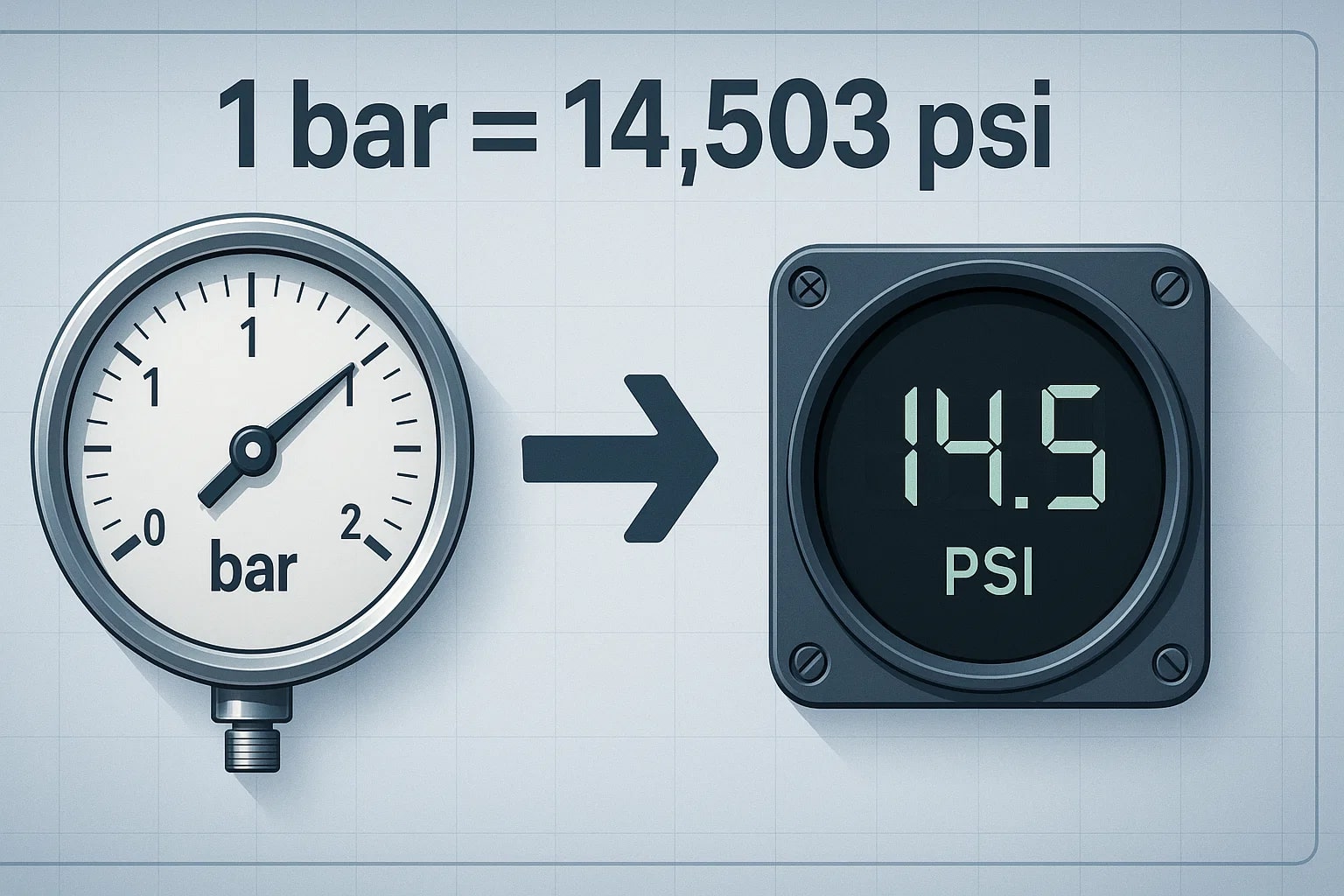bar to pound per square inch - How to convert bar to psi
Pressure is a key concept in science, engineering, and even daily life. The conversion from bar to pound per square inch (psi) often appears in automotive tire gauges, industrial compressors, or hydraulics. This article explains the differences between these two units, shows you the formula to convert, and shares fascinating stories and facts along the way.
What is a bar?
A bar is a metric unit of pressure, equal to 100,000 pascals. Engineers introduced it to provide a convenient approximation of atmospheric pressure at sea level, which is about 1.013 bar. Because of this, the bar is widely used in weather forecasting, diving, and mechanical applications.
What is pound per square inch (psi)?
A pound per square inch (psi) is a unit of pressure in the imperial system. It measures the force of one pound applied over an area of one square inch. Psi is commonly used in the United States for tire pressure, industrial equipment, and pipelines.
Conversion formula bar to psi
The conversion formula between these two units is straightforward:
1 bar = 14.503 psi
So, if you want to convert bar to psi, just multiply the pressure value in bar by 14.503. For example:
-
2 bar × 14.503 = 29.006 psi -
5 bar × 14.503 = 72.515 psi
This simple formula makes it quick to switch between the metric and imperial systems, no matter the context.

Did you know?
-
Bar in diving: Divers use bar to measure the pressure around them underwater. Every 10 meters beneath the surface adds approximately 1 bar of pressure, making the unit intuitive for underwater explorers.
-
Psi in racing: In Formula 1 racing, tire pressure in psi can determine lap times. Even a difference of 1 psi can affect grip, speed, and performance on the track.
-
Bar in weather: Meteorologists track atmospheric pressure in bar or hectopascal. A drop of just 0.05 bar can indicate an incoming storm system.
-
Psi in movies: In the film The Abyss (1989), divers deal with extreme underwater pressures. Although the movie uses atmospheres for drama, in reality psi readings are crucial for submarine and deep-sea equipment.
A story from the skies: The Concorde and psi precision
One of the most fascinating applications of pressure conversion appeared during the era of the supersonic passenger jet, the Concorde. Flying at twice the speed of sound, the Concorde faced unique engineering challenges. The cabin needed to stay comfortable for passengers while the outside experienced tremendous stress.
Engineers relied heavily on psi measurements for monitoring fuel tanks, hydraulic systems, and cabin pressure. Small errors in psi values could lead to inefficiency or even danger at high altitudes. Meanwhile, bar was used in ground equipment for fueling and testing, making the bar to psi conversion a daily necessity for the Concorde’s crew.
The story of the Concorde reminds us that unit conversion isn’t just an academic exercise—it can be the difference between safe travel and technical failure in some of the most advanced machines ever built.

Final thoughts
Converting bar to pound per square inch (bar to psi) is a practical skill that shows up in cars, airplanes, diving, and even weather reports. The formula is simple, yet the impact of accurate conversion is immense.
If you need quick results, try our Conversion Tools. For other calculations like angular changes, the Pressure Conversion tool is also helpful.
Pressure may seem invisible, but it shapes every aspect of our lives—from the depths of the ocean to the edge of space. With the right conversion knowledge, you’ll always be ready to handle it.

